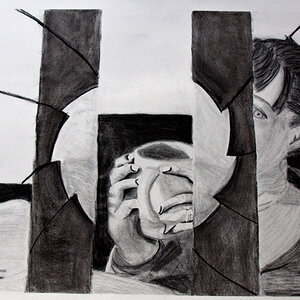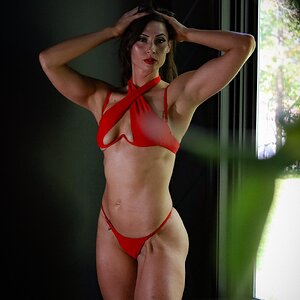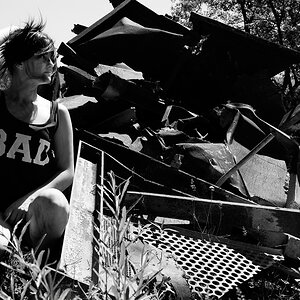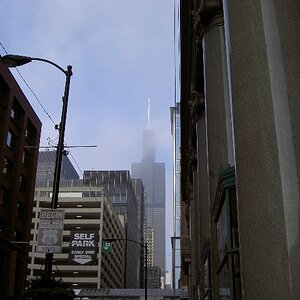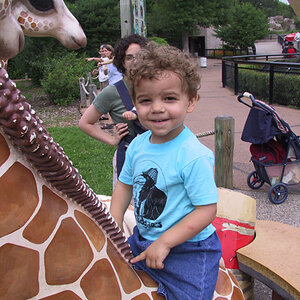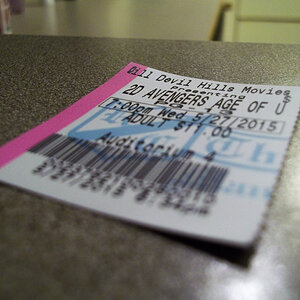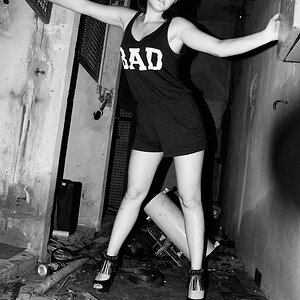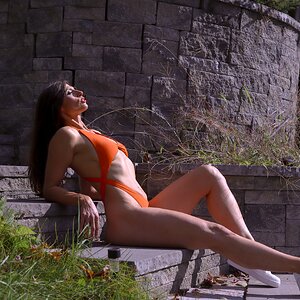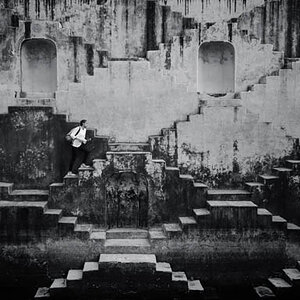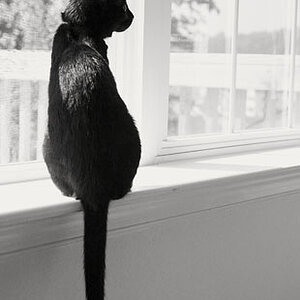- Joined
- Apr 9, 2009
- Messages
- 41,401
- Reaction score
- 5,706
- Location
- Iowa
- Website
- kharrodphotography.blogspot.com
- Can others edit my Photos
- Photos OK to edit
A Stop
A stop of exposure is a fundamental photography concept.
A 'stop' is a doubling (2x) or a halving (0.5x) of the amount of light that reaches the recording media, be it film or an electronic sensor.
Since exposure is a triad of adjustments (shutter speed, ISO, lens aperture) you can change 1, 2 or all 3 of the triad settings.
If you want 1 more stop of exposure (brighter) you can adjust just one of the 3 by 1 more stop.
Or, you can change 2 of the 3 by 1/2 more stop each for a net gain of 1 stop of exposure.
Or, you can adjust all 3 by 1/3 more stop for a net gain of 1 stop of exposure.
You can also change the triad of settings and have no change in the exposure.
If you change 1 of the 3 settings by 1 stop more exposure and change a 2nd setting by 1 stop less exposure the net change is zero.
Suppose you subtracted a stop of shutter speed to help stop subject motion, you could add a stop of lens aperture to keep the exposure the same. However, adding a stop of aperture will also affect the total DoF by a small amount. So, if you don't want the DoF to change you would add a stop of ISO instead, however, adding a stop of ISO will increase by some amount the image noise in the photo.
Note: DSLR cameras are set by default to adjust the exposure settings in 1/3 stop increments.
Most DSLR cameras let you change that to 1/2 stop or 1 stop increments.
However, the advantage of 1/3 stop step increments is more precise control of exposure.
A stop of exposure is a fundamental photography concept.
A 'stop' is a doubling (2x) or a halving (0.5x) of the amount of light that reaches the recording media, be it film or an electronic sensor.
Since exposure is a triad of adjustments (shutter speed, ISO, lens aperture) you can change 1, 2 or all 3 of the triad settings.
If you want 1 more stop of exposure (brighter) you can adjust just one of the 3 by 1 more stop.
Or, you can change 2 of the 3 by 1/2 more stop each for a net gain of 1 stop of exposure.
Or, you can adjust all 3 by 1/3 more stop for a net gain of 1 stop of exposure.
You can also change the triad of settings and have no change in the exposure.
If you change 1 of the 3 settings by 1 stop more exposure and change a 2nd setting by 1 stop less exposure the net change is zero.
Suppose you subtracted a stop of shutter speed to help stop subject motion, you could add a stop of lens aperture to keep the exposure the same. However, adding a stop of aperture will also affect the total DoF by a small amount. So, if you don't want the DoF to change you would add a stop of ISO instead, however, adding a stop of ISO will increase by some amount the image noise in the photo.
Note: DSLR cameras are set by default to adjust the exposure settings in 1/3 stop increments.
Most DSLR cameras let you change that to 1/2 stop or 1 stop increments.
However, the advantage of 1/3 stop step increments is more precise control of exposure.



![[No title]](/data/xfmg/thumbnail/42/42451-9e2e4f1caad4c45d0c61e2a856140c36.jpg?1619740190)
